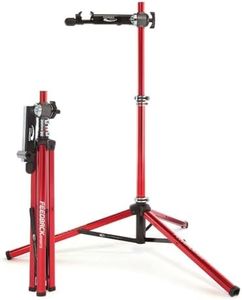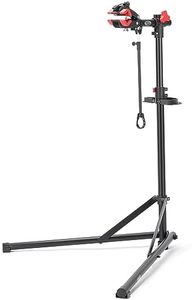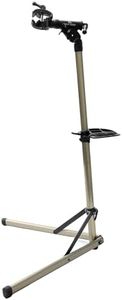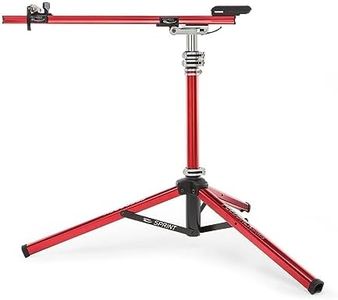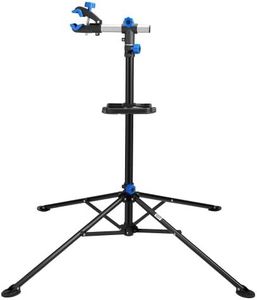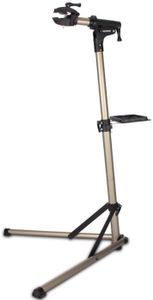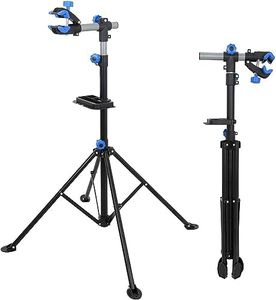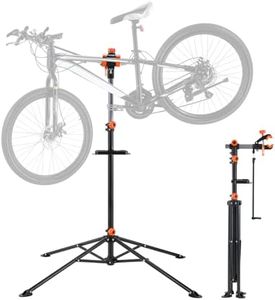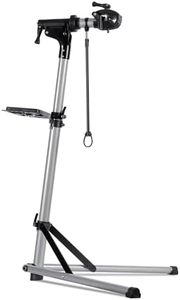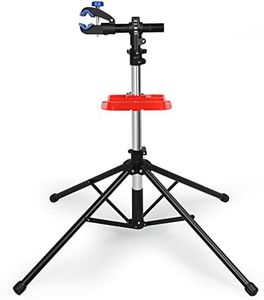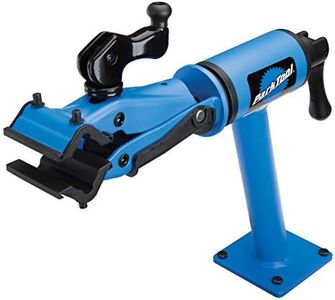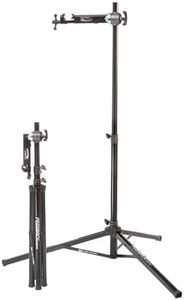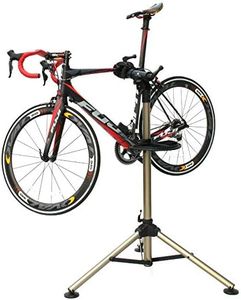We Use CookiesWe use cookies to enhance the security, performance,
functionality and for analytical and promotional activities. By continuing to browse this site you
are agreeing to our privacy policy
10 Best Bicycle Repair Stands
From leading brands and best sellers available on the web.Buying Guide for the Best Bicycle Repair Stands
Choosing a bicycle repair stand is an excellent way to make maintenance and repairs on your bike easier, safer, and more comfortable. The right stand can help you work on your bike at a convenient height, hold it securely, and prevent damage during repairs. When shopping for a repair stand, it’s important to consider how you’ll use it, what type of bikes you have, and the amount of space available for setup and storage. Understanding the main features of repair stands will help you select one that best suits your needs and makes bike maintenance a much more pleasant experience.Clamp Type and CompatibilityThe clamp is the part of the stand that holds your bike in place. It's important because it determines how securely and gently your bike can be held during repair. There are various clamp styles, from adjustable clamps that fit a wide range of tube shapes and sizes, to simpler designs suited for standard round tubes. If you have a bike with an unusual frame, like an oversized or aero frame, you’ll want to ensure the clamp opens wide enough or is shaped to handle it. For most users, a versatile clamp that’s easy to operate is ideal. If you’re planning short, occasional repairs, a basic clamp works, but avid bikers—especially those with multiple bikes—should look for versatility and easy adjustment.
Weight CapacityWeight capacity refers to how much your bike repair stand can safely hold. This is important because heavy bikes, such as e-bikes or mountain bikes, put more strain on the stand, and exceeding weight limits can make the stand unstable or damage it. Repair stands are typically divided into those for lighter bikes (15-25 kg), those suitable for most standard bikes (25-35 kg), and heavy-duty stands (35 kg and above). When choosing, consider the heaviest bike you own or plan to work on and choose a stand with a higher weight limit to ensure both safety and durability.
Height AdjustmentHeight adjustment is a feature that lets you raise or lower the bike while it’s mounted, allowing you to work comfortably whether standing or sitting. This is important for preventing back strain and making detailed repairs easier. Some stands have limited adjustment and are best for users of average height, while others offer a wide range and can be customized to fit you perfectly. If you’ll be sharing the stand or need to work on different parts of the bike at various positions, choosing a stand with lots of height adjustability is the best bet.
Portability and StoragePortability and storage refer to how easily the stand can be moved or packed away when not in use. This is critical if you have limited space at home or intend to take your stand with you. Lightweight, foldable stands are best for those with limited space or for travel, while heavier, more permanent stands suited for a home workshop may not fold as easily but are sturdier for frequent use. Decide where you’ll use the stand most and how frequently you’ll need to move it before selecting.
StabilityStability indicates how well the stand stays upright and balanced, especially when working on heavier bikes or when exerting force during repairs. Stable stands have a wide base and solid construction. Tripod bases or stands with wide legs are generally more stable and work well on uneven surfaces or outdoors. Less stable stands are lighter and easier to move but might wobble more, especially with bigger bikes. If you plan on doing more involved maintenance or using the stand outside, stability is a top priority.
Rotating Clamp/HeadA rotating clamp or head allows you to turn and angle the bike on the stand so you can access different parts easily. This feature is important for convenience and efficiency, especially when working on hard-to-reach areas. Some stands allow full 360-degree rotation, while others are more limited. For simple cleaning and adjustments, a fixed head may suffice, but for frequent or complex repairs, opt for a stand that allows more rotation for the best access to every part of your bike.
